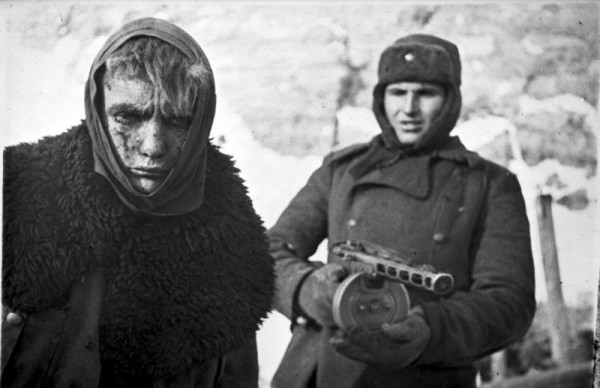 For the first time in my living memory, the Austrian Federal Army is front-page news of Austrian papers and is debated heatedly on public television. Riding a populist crest but lacking the foresight of any clear direction, Vienna Mayor Michael Hauepl, Federal Chancellor Werner Feymann, and Minister for Defense and Sport Norbert Darabos are calling all Austrians to the polls to decide the future of national defense in Austria. In a bizarre reversal of their historical positions, the socialist SPOE favors the establishment of an all-volunteer military force, whereas the conservative OEVP firmly defends mandatory military conscription. Rather than try objectively to debate this issue and reach an agreement, both parties cowardly escaped by enlisting the Austrian people to determine the future of the Austrian Federal Army.
For the first time in my living memory, the Austrian Federal Army is front-page news of Austrian papers and is debated heatedly on public television. Riding a populist crest but lacking the foresight of any clear direction, Vienna Mayor Michael Hauepl, Federal Chancellor Werner Feymann, and Minister for Defense and Sport Norbert Darabos are calling all Austrians to the polls to decide the future of national defense in Austria. In a bizarre reversal of their historical positions, the socialist SPOE favors the establishment of an all-volunteer military force, whereas the conservative OEVP firmly defends mandatory military conscription. Rather than try objectively to debate this issue and reach an agreement, both parties cowardly escaped by enlisting the Austrian people to determine the future of the Austrian Federal Army.
The debate itself is not worth recounting or detailing. Austria has one of the lowest defense budgets in Europe, and the most common expression describing officers and NCOs serving in Austria’s Armed Forces by the public is “Zivilversager” (a failure in civilian life; hence, the only option for him or her is the military). The aversion to the military is culturally deeply entrenched in the collective psyche of Austrians and Germans and still a legacy of the Second World War. As such, it is interesting that the government selected January 20, the 70th anniversary of Stalingrad — one of the most brutal and costly battles for Austrians in WWII, to ask the Austrian people to determine the future of its military.
On January 20, 1943, the 65th Soviet Army broke through the German defensive lines around Stalingrad and by January 22 had reached Gumrak, the last German airfield equipped to land transport planes carrying supplies into the cauldron and evacuating the wounded. The fate of the 6th Army was sealed. On the very same day, the 6th Army in Stalingrad received the following signal from Hitler: “Surrender out of the question. Troops fight to the end. If possible, hold reduced fortress with troops still battle worthy. Bravery and tenacity of fortress have provided the opportunity to establish a new front and launch counter-attacks. Sixth Army has thus fulfilled its historical contribution in the greatest passage in German history. ” The last German units capitulated by February 2. Around 100,000 soldiers were captured, of which only 5,000 returned to their homelands.
Two Austrian divisions were attached to the 6th Army. First, the 100th Jaeger (hunter) division of the German Wehrmacht was raised in Upper Austria in December 1940. Two-thirds of its men were Ostmaerker, as Austrians were referred to ever since the Anschluss of 1938. Second, the German 44th Infantry Division “Hoch und Deutschmeister” was formed in 1938 in Vienna from elements of the Austrian Army. Both divisions were annihilated completely in Stalingrad. In an old book on the battle in German, I came across the sentence: “Beide Division sind im Kessel untergegangen” (both divisions went down in the cauldron), which provides a rather organic and culinary image to the death of so many. Austrians also served in all of the other German divisions that fought and perished in Stalingrad.
According to Manfred Kehrig and Stefan Karner, around 50,000 Austrians served in Stalingrad, of which 49,000 died. The total 6th Army around the time of the encirclement numbered approximately 250,000. Of the 5,000 “Stalingrad Heimkehrer” (soldiers who returned after the war), 1,000 came from Austria. One-fifth of German troops in Stalingrad were actually Austrians. Thus Austrians proportionally were overrepresented when one compares the population of Austria in 1938 — around 6 million — to that of the 65 million people living in Germany in the same year.
Of course, Austria as part of the Third Reich had compulsory military service at that time. The 44th Division, however, consisted almost exclusively of members of the old Austrian Army — an all-volunteer force. Both units fought and died equally well although, as a Russian interrogator later recalled from a conversation with a German officer, “It is said of Austrian soldiers that they don’t fight well… Austrians have historical reasons for not being as rigid as Prussians. And because Austrians are used to getting on with other nationalities, they don’t have the sort of national pride as Prussians do.” The terms of service, however, (voluntary versus mandatory) did not impact the Soviets in assessing the fighting strengths of both Austrian divisions, as the book Stalingrad by Anthony Beevor shows.
Almost every single Second World War memorial in Austria bears the name Stalingrad — even in my small village of Lebring St. Margarethen. It has become a synonym for the utter horror and destructive power of war and senseless slaughter. When Austrians go to the polls on January 20 (not many will, I wager), Stalingrad will not be on anyone’s mind, yet there lies somewhere deeply buried in the collective subconscious of the Austrian people the glooming horror of Stalingrad, overshadowing our conversations on military matters exemplified now by the inability of Austria to seriously converse about her national defense policy.